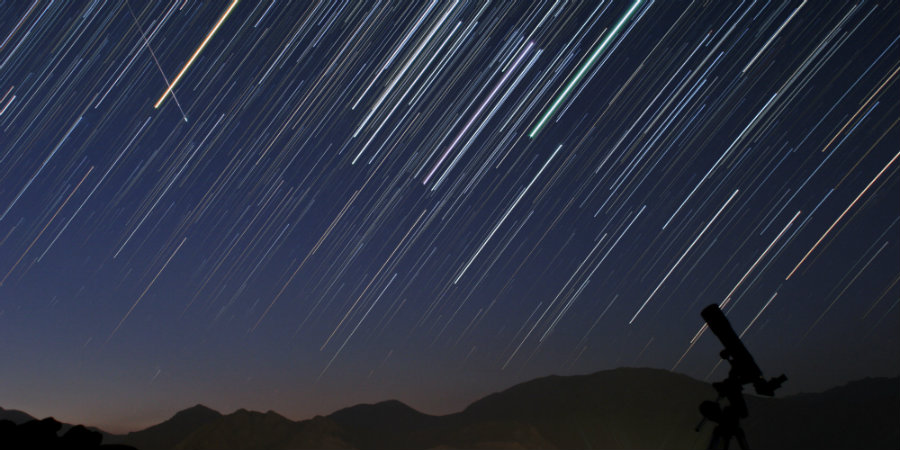On Friday night the annual Lyrid meteor shower will light the skies. The Lyrid meteor shower comes from pieces of the comet Thatcher, which was discovered and last seen in 1861.
Thatcher reached perihelion in 1861, which is the point in its orbit closest to the sun, and it takes 415.5 years for the comet to orbit the sun, meaning that it will be seen in 2276.


The Lyrid meteor shower is active every year between April 16 and April 25, and it tends to peak on April 22 or 23. The best time to view the meteor shower is between midnight and dawn. Meteor showers are called after the constellation that coincides with the part of the sky from which the meteors seem to cone. The Lyrid meteor shower as it appears as it comes from the constellation Lyra.
The Lyrid meteor shower is seen every year in April
On the night of April 5, 1861, an amateur astronomer named A. E. Thatcher was observing the skies in New York when he noticed an unusual object in the constellation of Draco. He described the object as a tailless nebulosity which measured two to three times the diameter of Jupiter and that glowed at about magnitude 7.5.
The object was a comet, which brightened over the course of three weeks as it approached the sun and the Earth. On April 28, the comet became slightly more visible to the naked eye, and it continued to pass over the next weeks around Earth, before finally heading back out into space.
According to Astronomy magazine, in a good year, people using just their naked eye can see up to 20 shooting stars per hour, around one every three minutes. This year, conditions look ideal for a clear view of the meteor shower. The waning crescent Moon rises at around 4 a.m. local daylight on April 22, and it sheds little light into the predawn sky.
Lyrid meteor shower will be best seen at 12:00 GMT
The Moon’s light has often interfered meteor viewing by drowning out fainter streaks. Because of this, the better sightings of the Lyrid meteor shower are seen in places far from the lights of cities.
Every year in April, the pieces of the comet Thatcher hit Earth’s atmosphere at 109,600 miles per hour, vaporizing from friction caused by the air and leaving behind streaks of light called meteors.
Specialists believe this year the Lyrid meteor shower will be visible, as conditions are top. According to Space.com, if clear sky prevails on Saturday morning, you can expect to see between 10 and 20 meteors per hour if the sky is dark and moonless. However, fewer meteors will be seen from places where light or obstructions block parts of the sky.
The Lyrid meteor shower is not as visible as some other annual meteor showers, although it tends to be bright and fast. The meteor shower’s peak of activity lasts only a few hours, and it’s predicted to start this year at 8 a.m. EDT on April 22 (12:00 GMT).
Source: Space

